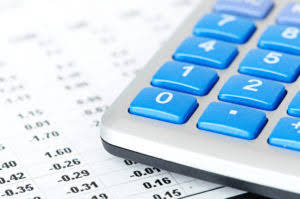
For instance, a financial analyst might report a company’s market capitalization as $500MM, clearly indicating $500,000,000. For example, if a company has revenue of $45,000,000, it can be written as $45MM. This makes financial documents easier to read and understand, particularly when dealing with large numbers. As commerce and trade expanded during the Renaissance, the need for more sophisticated financial reporting became apparent. Merchants and bankers required a standardized way to represent large sums of money, leading to the adoption of “MM” to denote millions.
- The meaning of the word « million » is common to the short scale and long scale numbering systems, unlike the larger numbers, which have different names in the two systems.
- While it is accepted in English today that one billion equals 109, it is important to be aware, especially when reading older texts, that in the United Kingdom billion hasn’t always meant 109.
- One of the primary benefits of using “MM” in international reporting is its ability to reduce ambiguity.
- As businesses grew in scale and complexity, the volume of financial data increased exponentially.
M vs. MM Abbreviation
The word “million” can be paired with the suffix “-aire” to form the word millionaire which https://www.instagram.com/bookstime_inc indicates an individual with a million or more dollars. “M” is derived from the Roman numeral for 1,000, and it is often used to denote thousands. This usage is prevalent in various industries and contexts, particularly in the United States, where it simplifies the representation of large numbers without overwhelming the reader with zeros. The term enables clarity and consistency, reducing the risk of misunderstandings due to different interpretations of number notation. To avoid confusion, use any and all abbreviations consistently throughout all your financial records. Unfortunately, there isn’t a consistent approach to labeling units.
Share this Article
It allowed accountants and financial analysts to present large figures in a more digestible format, facilitating better decision-making and financial planning. The use of “MM” to denote millions in financial contexts has a rich history that intertwines with the evolution of accounting and financial reporting practices. The origins of this notation can be traced back to the Roman Empire, where the numeral system laid the groundwork for modern numerical abbreviations. The Romans used “M” to signify 1,000, and this convention persisted through the centuries, influencing various aspects of numerical representation in Western cultures.
Informal terminology
This period saw the rise of double-entry bookkeeping, a system that revolutionized accounting by providing a clear and systematic method for recording financial transactions. The use of “MM” fit seamlessly into this new framework, offering a concise way to represent substantial amounts without cluttering financial records. The choice between “M” and “MM” can also be influenced by regional practices and industry standards.

Examples
After analyzing its history and modern use, I have a new appreciation for how deeply rooted MM is within finance culture, likely to endure for the foreseeable future. You can see it on ancient French and British ledgers from the 18th and 19th centuries where « M₤ » represents £1000 and « MM₤ » is £1million. So the convention of using M for thousands and MM for millions originated in Roman numeral-based accounting. In financial operations – where every zero in a number is crucial – abbreviating large figures helps reduce potential errors when handling complex calculations and transactions. The meaning of the word « million » is common to the short scale and long scale numbering systems, unlike the larger numbers, which have different names in the two systems. One thing to consider is that when writing about large amounts of money, the words “million” or “billion” are often left out altogether, as are superfluous zeroes.


Consistent use of such abbreviations helps maintain uniformity across various documents, whether they are balance sheets, income statements, or cash flow statements. This uniformity is crucial for analysts and investors who rely on these documents to make informed decisions. For example, when comparing financial statements from different companies, the use of MM ensures that figures are easily comparable, reducing the risk of misinterpretation. The word “million” is not a commonly abbreviated word, but its abbreviations still have their place. An abbreviation for million is most often seen in financial documents and paperwork.
The use of “MM” became more entrenched as these standards aimed to harmonize financial reporting across different jurisdictions, ensuring consistency and comparability. The term “MM” originates from the Roman numeral M, which stands for one thousand. It is commonly used in financial documents, accounting, and stock market where space is a concern. It also saves space and enhances readability mm meaning million in financial reports, statements, or ledgers where space might be limited. Furthermore, using MM can make a large-scale monetary value easier to quickly grasp, both visually and conceptually, as it simplifies the financial quantities being discussed or presented. The term MM is used in the finance world to denote one million and is a standard nomenclature used across the globe.
- Furthermore, using MM can make a large-scale monetary value easier to quickly grasp, both visually and conceptually, as it simplifies the financial quantities being discussed or presented.
- If you’re looking to avoid the word million altogether, you won’t have much luck.
- The choice between “M” and “MM” can also be influenced by regional practices and industry standards.
- Any universal shift would require a coordinated effort from all major institutions simultaneously.
- The Guardian and The Telegraph spell out thousand, million, etc. in full when referring to people and animals and use the abbreviated forms only when discussing inanimate objects or in financial contexts.
- You have to be careful when using it or interpreting it because MM can stand for other things too.
Swap the word “million” for “mil” or “mm” to avoid redundant language but to still be specific in how large numbers you’re working with. Other numbers, such as “thousand,” have more interesting abbreviations, such as “k.” The three letters “mil” are very clearly defined as mbeaning million, so you shouldn’t run into any issues. The industrial revolution further accelerated the adoption of “MM” in financial https://www.bookstime.com/ reporting. As businesses grew in scale and complexity, the volume of financial data increased exponentially. The need for efficient and standardized reporting methods became more pressing, and “MM” emerged as a practical solution.

